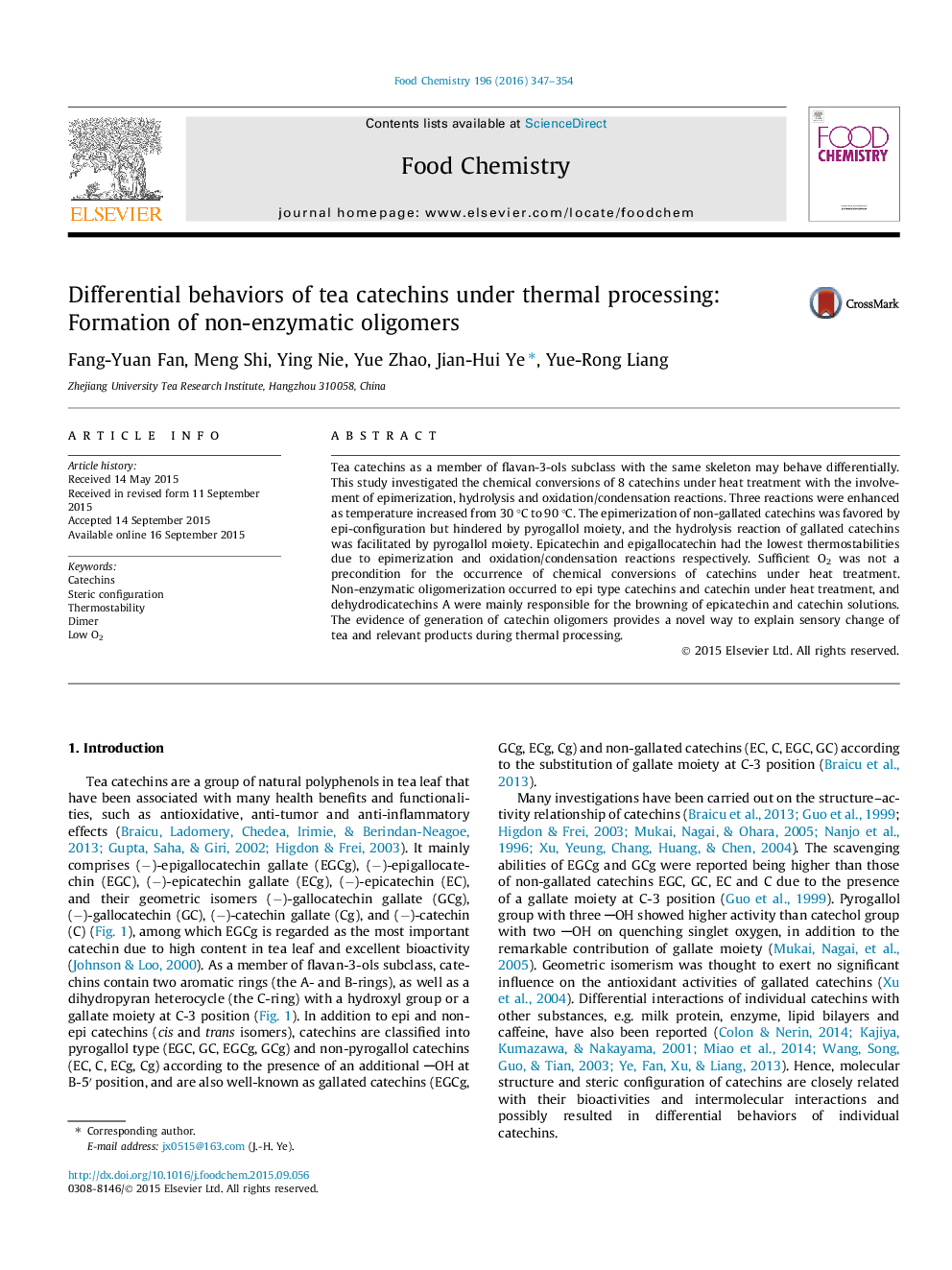| Article ID | Journal | Published Year | Pages | File Type |
|---|---|---|---|---|
| 1184156 | Food Chemistry | 2016 | 8 Pages |
•8 catechins behaved differentially under thermal processing.•Epimerization, hydrolysis and oxidation/condensation reactions were involved.•Substituent and steric effect were clear to epimerization of non-gallated catechin.•Oligomers were generated from epi type catechins and C samples during heating.•Dehydrodicatechins A produced the yellow color of heated EC and C samples.
Tea catechins as a member of flavan-3-ols subclass with the same skeleton may behave differentially. This study investigated the chemical conversions of 8 catechins under heat treatment with the involvement of epimerization, hydrolysis and oxidation/condensation reactions. Three reactions were enhanced as temperature increased from 30 °C to 90 °C. The epimerization of non-gallated catechins was favored by epi-configuration but hindered by pyrogallol moiety, and the hydrolysis reaction of gallated catechins was facilitated by pyrogallol moiety. Epicatechin and epigallocatechin had the lowest thermostabilities due to epimerization and oxidation/condensation reactions respectively. Sufficient O2 was not a precondition for the occurrence of chemical conversions of catechins under heat treatment. Non-enzymatic oligomerization occurred to epi type catechins and catechin under heat treatment, and dehydrodicatechins A were mainly responsible for the browning of epicatechin and catechin solutions. The evidence of generation of catechin oligomers provides a novel way to explain sensory change of tea and relevant products during thermal processing.
